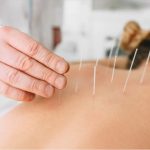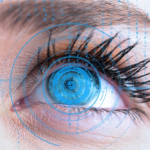Methods of Face Mapping for Creating a Uniquely Beautiful You
Achieving a glowing, spotless complexion is a typical objective in the skincare and cosmetics industries. However, everyone’s skin is different, so one person’s solution may not be effective for another. Here’s when face mapping comes in handy. Face mapping is a specialized method of caring for your skin that takes into consideration your individual needs. Discover the revolutionary face mapping technique at The Skin Care Clinic.
The Basics of Face Mapping
The art of face mapping has its origins in both Ayurvedic and traditional Chinese medicine. It entails sectioning off parts of one’s face that are said to represent various bodily functions. The state of your skin in these areas may tell you a lot about your general health and wellness.
Facial Contours and Zones
In order to make good use of face mapping, it is crucial to comprehend the various facial regions and the messages they convey.
- Forehead
The stomach is associated with the forehead. Inflammation of the digestive tract or the ingestion of foods that aren’t compatible with your body might cause breakouts or oiliness.
- Nose
The nose has been linked to the cardiovascular system and the heart. If your nose is red or you have broken capillaries, it might be a sign of high blood pressure or poor circulation.
- Cheek
The lungs and respiratory system are linked to the cheeks. Signs of allergies or smoking include acne or redness of the cheeks.
- Chin
The endocrine system and the chin have a specific relationship, particularly in women. Hormonal instabilities and emotional strain may both contribute to acne and other skin imperfections here.
- Eyes
The skin surrounding your eyes is a barometer for your kidney and adrenal gland function. Puffiness or dark rings around the eyes may be a sign of renal disease or stress.
The Value of Face Mapping in Skincare
Now that we know where to focus our attention, we can explore how face mapping might improve your skincare routine.
- Individualized Product Recommendations
Identifying problems in each face zone allows you to select skincare products that are more effectively targeted to those areas. This will save you from blowing time and money on skincare products that won’t work for your skin.
- Making Healthier Decisions
The practice of face mapping might help you tune into your internal cues. Changes in nutrition, stress management, and maybe medical intervention may help those who suffer from breakouts in one specific area.
- Maintenance Care
Face mapping is useful for detecting any health problems at an early stage so that treatment may begin sooner. Improved overall wellness and glowing skin might be the result of catching issues early.
Face Mapping: An Introduction
To help you get started with face mapping, here is a quick primer:
- Remove All Makeup and Skincare Products. Start with a clean face.
- Use a mirror to carefully inspect your skin in each area of your face. Note any areas of redness, spots, or other abnormalities.
- A face map chart can help you decipher the hidden meanings behind the symptoms you’ve seen.
- Based on your research, make alterations to your beauty routine and other habits.
- Maintain a routine of face mapping to monitor your skin’s and body’s progress.
Conclusion
Face mapping is helpful since it lets you tailor your approach to things like skincare and makeup. You may improve your general health and the health of your skin by learning about the different areas of your face and the relationships between them. Keep in mind that there is no universal solution for getting glowing, perfect skin. Take advantage of face mapping’s capabilities and start your path toward a more beautiful self, customized just for you.
FAQs
- In the world of skincare, what is face mapping?
When it comes to skincare, “face mapping” is a process that includes segmenting the face into zones that correspond to various bodily systems and organs. Location-specific analysis of skin issues and treatment are made possible with this tool.
- Why is it helpful to use face mapping for skincare?
Face mapping is useful in skincare since it may assist in identifying the root causes of skin problems. To improve skin health, it is important to first determine which face zones are impacted so that the right skincare products and habits may be used.
- In face mapping, what are the most typical facial regions?
In face mapping, the most often used facial zones are the brow, nose, cheeks, chin, and eye regions. Different parts of the body and different systems are connected to different zones.
- What exactly can a face map tell me about my complexion?
It is possible to learn about your skin’s health and lifestyle through face mapping. Depending on the state of various facial zones, it can provide insight into things like hormone imbalances, gastrointestinal difficulties, allergies, and stress levels.
- Can only certain skin tones benefit from face mapping?
In fact, face mapping can help any skin type. It enables people to tailor their skincare regimens to address specific issues with their skin.
- How can I get started with face mapping on my own?
You may practice face mapping at home by gathering a mirror, cleaning your face, and consulting a face mapping chart. Check your skin in each area of your face against the chart’s recommendations, and adjust your skincare and lifestyle routines as needed.
- Is face mapping superior to consult a dermatologist?
While face mapping can be a helpful resource for learning more about your skin, it should not be used in place of seeing a dermatologist. It is crucial to see a dermatologist if you have any significant skin problems or other medical conditions.
- How frequently should I map my face?
Face mapping might occur more or less frequently in different people. Some people might do it once a week, while others might do it once a month. Checking your skin on a frequent basis can allow you to notice any changes and make any adjustments to your skincare program.












